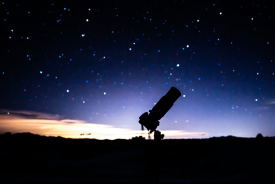The European Space Agency's (ESA) Rosetta satellite is still orbiting Comet 67P/C-G after the icy space rock's close encounter with the sun.
According to The Washington Post, the comet survived perihelion, an object's closest encounter with the sun in an orbit, with Rosetta in tow and Philae on board. Rosetta's survival was considerably more vital since the Philae lander has not been responding with mission managers on Earth since coming out of hibernation.
A little more than a year ago, Philae became the first spacecraft to ever land on a comet, but bounced in its attempt and wound up under a cliff. Blocked from receiving any sunlight, Philae hibernated until this past June, but Rosetta's mission managers have not been able to reach the lander since.
On July 29, Rosetta captured a gas jet from Comet 67P, The Post noted, which resulted from the comet warming and releasing gas from within. Now that the comet is sufficiently warming up, Rosetta will be keeping an eye out for more activity, as scientists do not believe the comet has reached its peak in that respect.
"Activity will remain high like this for many weeks, and we're certainly looking forward to seeing how many more jets and outburst events we catch in the act, as we have already witnessed in the last few weeks," Nicolas Altobelli, acting Rosetta project scientist, said in a press release.
The ESA will still have to be cautious, because more bits and pieces that come off the comet means more objects for Rosetta to have to avoid.
"In recent days, we have been forced to move even further away from the comet," Sylvain Lodiot, ESA's spacecraft operations manager, said in the release. "We're currently at a distance of between 325 km and 340 km this week, in a region where Rosetta's startrackers can operate without being confused by excessive dust levels - without them working properly, Rosetta can't position itself in space."
© 2026 University Herald, All rights reserved. Do not reproduce without permission.








